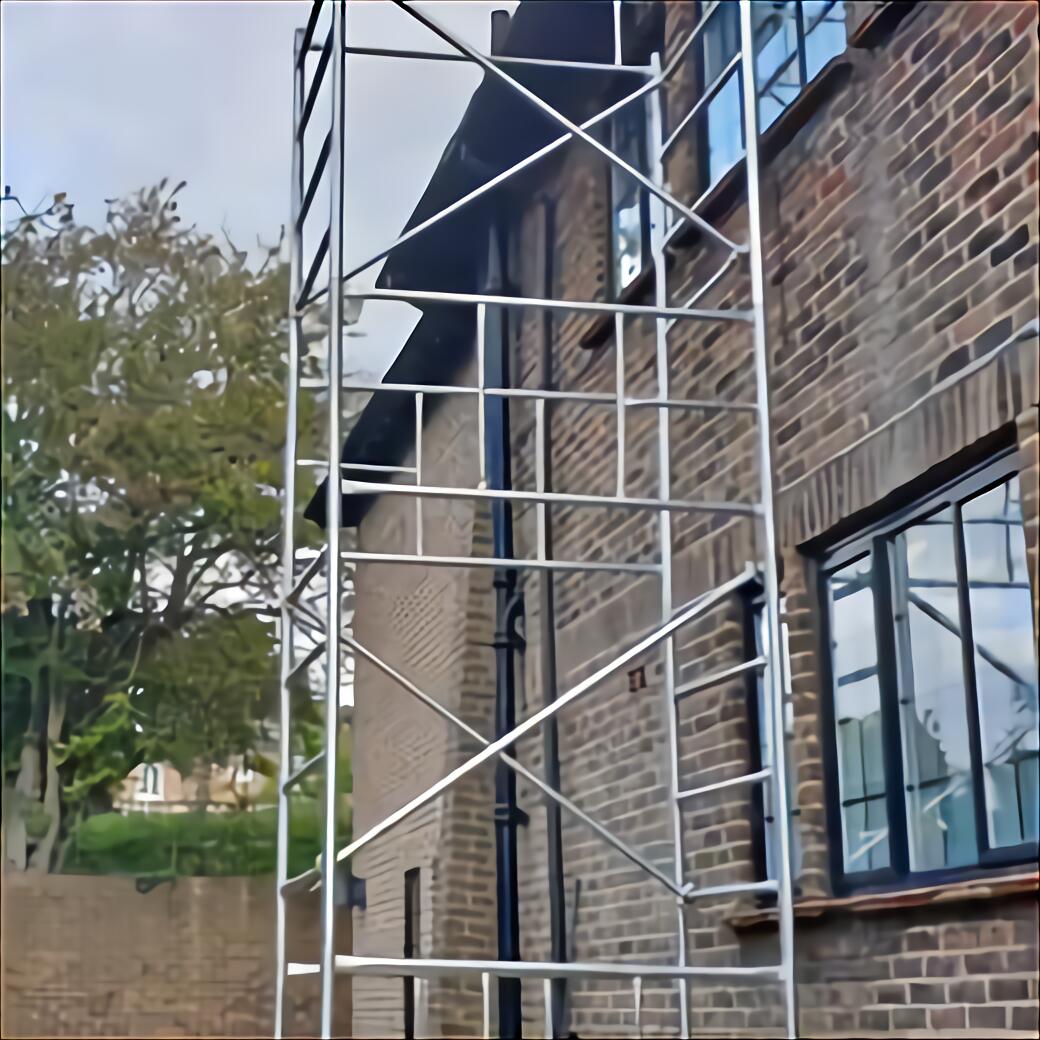Rubbish Chutes for Scaffolding: Maintaining Building Websites Clean
Scaffolding Laws: What You Need to Know =======================================
Comprehending scaffolding laws is important for worker security in building and construction. scaffolding planning & design Regulations set by OSHA cover style, weight capacity, and assessments. Different systems like modular and put on hold deal adaptability for projects. Normal inspections and fast modifications ensure stability. Training for assembly and fall defense is essential. Current modifications in laws may impact needs. Stay notified for a detailed grasp of scaffolding safety and security.
Importance of Scaffolding Laws
Comprehending the value of adhering to scaffolding policies is vital in ensuring the safety and security of employees and the public on building and construction websites. Security compliance within the building sector is not only an essential need yet likewise a moral obligation to shield people from harm. By adhering to rigorous scaffolding laws, business can effectively take care of dangers connected with working at heights, hefty loads, and possible dangers.
Risk monitoring plays an essential function in carrying out scaffolding policies. Determining possible risks, assessing their possibility and prospective impact, and taking positive measures to reduce these risks are basic action in ensuring a risk-free workplace. Adherence to regulations aids in lowering crashes, injuries, and casualties associated with scaffolding activities. It likewise promotes a society of safety and security awareness amongst workers and highlights the importance of complying with correct treatments and guidelines.
OSHA Criteria for Scaffolding
The Occupational Security and Health And Wellness Management (OSHA) has actually set durable requirements for scaffolding to ensure the safety and security of workers in the building sector. These laws are in area to stop crashes and make sure that scaffolding systems are set up and utilized appropriately.
OSHA's safety and security guidelines for scaffolding cover aspects such as the layout, construction, and positioning of scaffolds, along with the correct use scaffolding devices and fall protection actions.
According to OSHA standards, scaffolds ought to have the ability to sustain their own weight and at least four times the optimum intended load without failure. They need to additionally be geared up with guardrails, midrails, and toeboards to avoid falls. Normal examinations, generally done by a qualified person, are necessary to identify and deal with any potential risks immediately.
Adherence to OSHA policies is vital for building business to keep a risk-free working environment and prevent costly penalties. By complying with OSHA's security standards for scaffolding, employers can protect their employees from accidents and develop a society of safety on building and construction websites.
Types of Scaffolding Solutions
Numerous scaffolding systems are utilized in the construction industry to provide temporary support for employees and products at elevated heights. Two usual sorts of scaffolding systems are modular scaffolding and put on hold scaffolding.
Modular scaffolding, also referred to as system scaffolding, is prominent as a result of its flexibility and convenience of setting up. It includes pre-engineered parts that can be rapidly connected and gotten used to match different task requirements. Modular scaffolding is appropriate for jobs that call for constant reconfiguration or where gain access to needs might alter during construction.
On the various other hand, put on hold scaffolding is a system that hangs from the top of a framework rather than being supported from the ground. It is often made use of for jobs like home window washing or exterior structure maintenance. Suspended scaffolding offers unrestricted accessibility to the facade of a structure and is optimal for jobs where ground-based scaffolding is unwise or impossible. Both modular scaffolding and put on hold scaffolding play important duties in guaranteeing the safety and security and effectiveness of construction jobs at raised heights.
Scaffolding Examination Needs
Evaluating scaffolding is an essential element of making certain building site security and conformity with regulations. The frequency and criteria for scaffolding inspections are important to preserving a safe workplace. According to regulations, scaffolding should be evaluated by a competent individual prior to each work change and after any type of occasion that might affect its architectural integrity, such as extreme weather or effect from tools. In addition, official assessments must be conducted at normal periods, generally weekly, to assure continuous conformity with security criteria.
Compliance with examination demands is critical to avoid mishaps and assure the security of the scaffolding framework. Any type of infractions recognized during inspections should be promptly attended to and fixed to reduce possible threats to workers. Common violations consist of missing or damaged parts, poor supporting, improper planking, and overloading. Regular and thorough evaluations, together with quick rehabilitative actions for any kind of non-compliance, are important to keeping a safe scaffolding system on building and construction websites.
Training and Accreditation for Users
To ensure the risk-free use scaffolding on construction sites, correct training and certification for individuals are important. Certification needs for scaffolding individuals differ depending on the area and sort of scaffolding being used. In a lot of regions, customers are called for to finish a training program that covers topics such as scaffold assembly, inspection, safe use, and fall defense. These training programs are designed to ensure that individuals making use of scaffolding have the essential knowledge and abilities to work safely at heights.
Accreditation needs may additionally include demonstrating efficiency in putting up and taking down scaffolding, comprehending weight abilities, and recognizing how to recognize potential risks. Companies are typically responsible for making certain that their employees obtain the suitable training and certification prior to allowing them to make use of scaffolding on website. Normal refresher courses may be required to maintain certifications as much as date and reinforce risk-free methods. By mandating training programs and accreditation needs, authorities intend to minimize the risk of accidents and injuries associated with scaffolding usage.
Current Modifications in Scaffolding Regulation
Current changes in scaffolding legislations have brought about new safety and security demands that are forming the building and construction industry.
These laws are affecting how scaffolding is used on work sites and are influencing safety protocols to make sure workers are much better secured.
It is important for those in the construction field to stay informed and certified with these advancing legislations to maintain a risk-free work environment.
New Security Demands
Rigorous safety and security protocols have been applied as part of the current changes in scaffolding regulations to boost work environment security for building employees. Safety training has actually become a focal point, ensuring that employees are appropriately prepared to handle scaffolding tools and work at heights securely.
These brand-new requirements mandate that all employees obtain thorough safety and security training before participating in any scaffolding tasks. In addition, enforcement actions have actually been reinforced to ensure conformity with these safety and security procedures. Assessments are being conducted much more frequently, and serious consequences remain in place for non-compliance.
Influence On Construction Sector
With the recent adjustments in scaffolding legislations, the building sector is experiencing a substantial change towards increased security requirements and raised accountability.
These adjustments have had a noteworthy effect on labor efficiency within construction projects. The need to comply with stricter regulations has brought about a much more organized and safety-oriented technique to scaffolding use, which in turn has actually influenced the general effectiveness of labor on building and construction websites.
Furthermore, the upgraded laws have introduced cost effects for building business. While guaranteeing conformity can result in increased initial costs because of the application of safer scaffolding systems, in the long-term, it can lead to reduced expenditures related to crashes, injuries, and lawful problems, eventually benefiting both employees and employers.
Often Asked Questions

Can Scaffolding Rules Vary From State to State in the United States?
Yes, scaffolding regulations can vary from one state to another in the US. These distinctions may include variants in security procedures, evaluation needs, training criteria, and acceptable products. It is essential to understand and follow the particular policies in each state.
Exist Specific Weight Restrictions for Scaffolding Solutions?
Weight limits on scaffolding systems are essential for security. These limitations vary based on the sort of scaffolding and load ability. Complying with weight standards ensures structural honesty and reduces the danger of crashes, highlighting the importance of safety and security preventative measures.
How Typically Should Scaffolding Solutions Be Checked for Safety and security?
Scaffolding systems should be checked for safety frequently to guarantee compliance with policies and avoid mishaps. The frequency of inspection depends upon factors such as use, ecological conditions, and maker suggestions, typically ranging from regular to regular monthly. Set up maintenance is vital.
Are There Any Particular Requirements for Training on Specialized Scaffolding Solutions?
Specialized training for scaffolding systems involves certain qualification requirements to assure safe procedure. Training should cover the one-of-a-kind functions and threats of specialized systems, stressing appropriate assembly, use, and taking apart procedures for maximum safety and security compliance.
Exist Any Charges for Non-Compliance With Scaffolding Regulations?

Non-compliance with scaffolding laws can cause possible charges and enforcement actions. Failure to comply with these standards may result in pricey effects, lawful issues, and jeopardized safety measures, emphasizing the importance of rigorous conformity.
Verdict
To sum up, adherence to scaffolding policies is vital for guaranteeing the safety of employees and preventing accidents on building and construction sites.
OSHA requirements lay out the requirements for appropriate scaffolding usage and assessment. Different kinds of scaffolding systems have specific standards that need to be adhered to.
Training and certification are crucial for individuals to comprehend exactly how to securely collaborate with scaffolding. Remain upgraded on any kind of current adjustments in scaffolding regulations to keep conformity and promote safety and security criteria.
